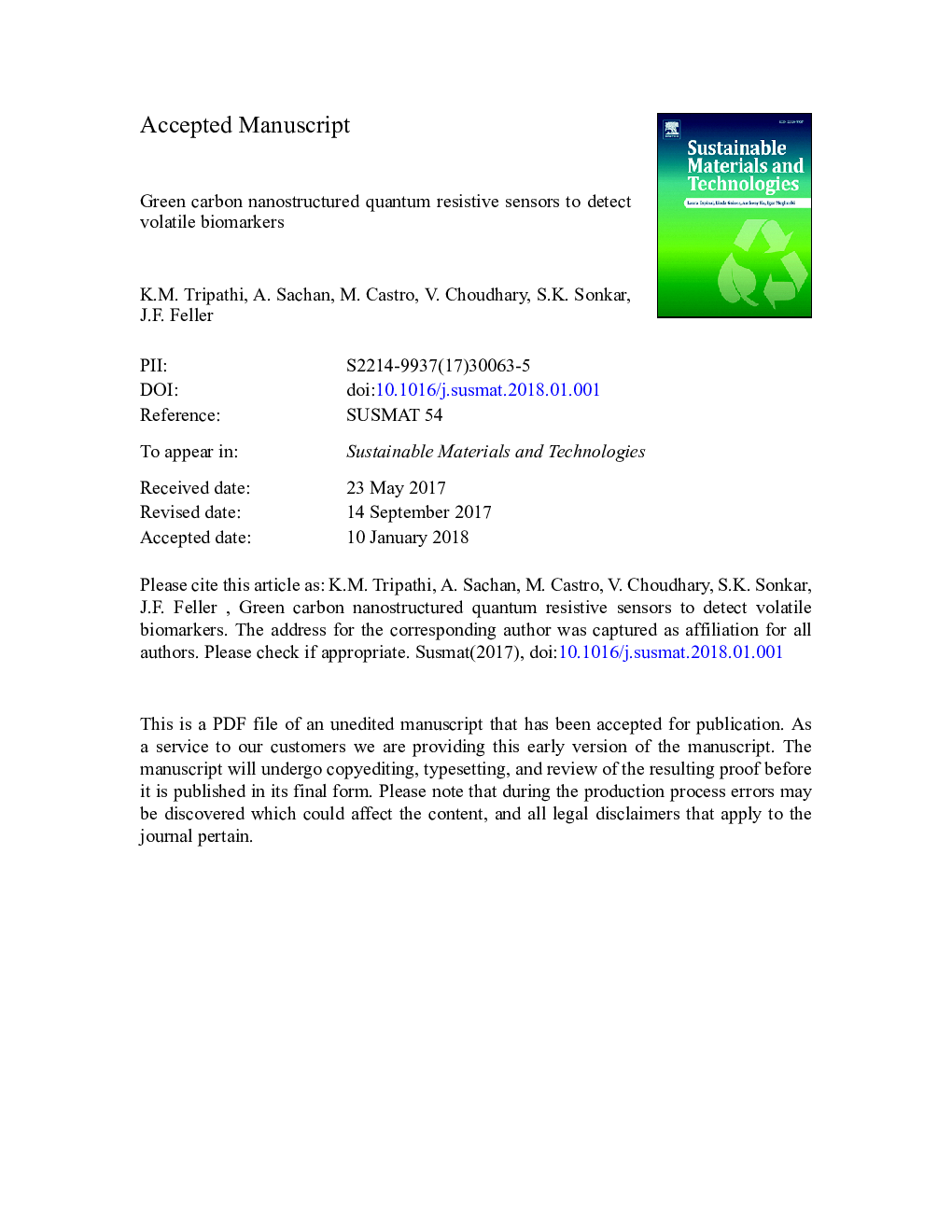| Article ID | Journal | Published Year | Pages | File Type |
|---|---|---|---|---|
| 7228338 | Sustainable Materials and Technologies | 2018 | 56 Pages |
Abstract
Sensing volatile organic compounds (VOC) is a promising approach in particular for the development of non-invasive, fast and inexpensive tool for the anticipated diagnostic of diseases and monitoring of exposition to toxic molecules. This paper examines for the first time the potential of biobased carbon nanorods (CNR), synthesized by a simple and green method in gram scale via the pyrolysis of castor oil, to build the conducting architecture of quantum resistive vapour sensors (vQRS). The transducers are nanostructured by spraying layer by layer (sLbL) carbon nanorods (CNR) completely free from any metallic contaminants or other impurities. Then they are functionalized with poly(lactic acid) PLA and poly(vinyl acetate) PVA to providing a set of three vQRS with distinct selectivities towards VOC, selected among lung biomarkers. The discrimination ability of an array (e-noses) composed of three CNR based vQRS has been demonstrated. It is found in particular that CNR native sensitivity to cyclohexanone can be modified by PLA that brings a larger selectivity to alcohols, whereas PVA allows to better sense acetone, cyclohexanone, benzene and carbon disulphide. After a PCA treatment, only benzene seems difficult to separate from carbon difulfide, which could be solved by the addition of a fourth transducer of complementary selectivity. Additionally, vQRS are found able to detect subppm concentrations of VOC with an enough good signal to noise ratio (5â¯<â¯SNRâ¯<â¯10) suggesting that they could be operational even at some ppb. Given their sensing performances it seems realistic to envisage their application in e-noses for the anticipated diagnosis of diseases and environmental monitoring as well.
Related Topics
Physical Sciences and Engineering
Energy
Renewable Energy, Sustainability and the Environment
Authors
K.M. Tripathi, A. Sachan, M. Castro, V. Choudhary, S.K. Sonkar, J.F. Feller,
